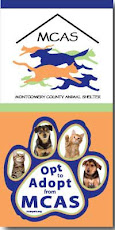We are learning all sorts of new skills from our experiences with my Min Pin, Taco, who has been battling severe gastro-intestinal illnesses since March 12th.
A very dear friend of mine has been helping me give Taco sub-cu fluids (I’ve learned how to hold the needle in place once she slides it under the skin). Today we reviewed the process for the “Vet Tech Hug,” which allowed us to administer medicines (pills crushed and dissolved in distilled water and Hills Science Diet A/D food mixed into a thick slurry (20 ccs at a time, administered by mouth through a big syringe). Taco’s severe pain has made him extremely bitey, and I’ve got bruises and small punctures from his sharp teeth. Fortunately, he is a small dog, so the bites are small, but his jaws are very powerful. It hurts like the dickens when he clamps down on a fingerful of Nutri-Cal.
The “Vet Tech Hug” method requires two people, a towel and a slip leash. The towel is spread on the table to stabilize the dog. The slip leash is for back up control at the beginning and end of the hug. The dog is left un-muzzled for this process. The holder encircles the dog’s neck, using the crook of the elbow like a vise to still the dog’s neck and lift the dog’s snout toward the ceiling. With the other arm, the holder encircles the dogs body—I’m more comfortable putting my arm over the topline, but it can be easier to slide the arm underneath the dog’s belly. You pull the dog toward your torso, hugging the animal in a firm squeeze.
I do the holding, and I have to get the grip right on the first go, otherwise, a dog Taco’s size can get leverage with his forelegs and pull his neck out of the grip or snap at my face. I don’t have a photo, but you can get the idea of the position from the picture above, which I found on Flickr.
While the dog is in my arms, my friend or my husband can take a prepared syringe and squeeze liquefied pills or food into the dog’s mouth. The key is to place the tip of the syringe in the small gap between the perimolars, as shown in the diagram below. The dog may mouth the syringe with its canines, but it’s almost impossible for the dog to bite down. Plus, this puts the syringe tip far enough back in the mouth that the dog is forced to swallow the liquid.
So far, we have given Taco half of his medication dosage for the day and have fed Taco 60 ccs of liquid food (20 ccs at a time, every hour and a half). The third syringe of food went down with only minimal resistance on Taco’s part. We’ll feed him again twice before bed tonight and give him his meds.
On Monday, Taco will have another sonogram. My Vet reviewed the numbers on his liver bloodwork and she suspects sludge in the gallbladder. A sonogram will confirm that and give us a clear look at the liver and other organs. Yes, it’s another expense, but if the gall bladder has been affected, it’s actually one of the easier issues to treat. There’s a possibility that Taco has developed pancreatitis, but we’ll have to wait until Monday. For now, the key is to get him eating (hopefully on his own) and to get his meds down his throat without getting bitten.





















